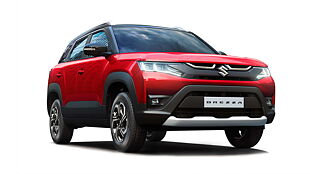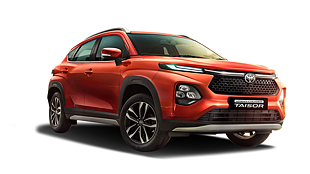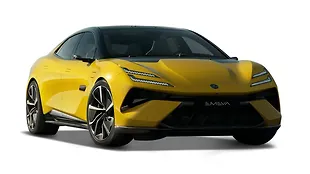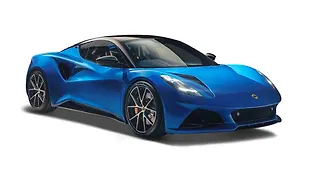Introduction

With a country obsessed with the fuel efficiency of their car, we surely are always on a lookout to extract that extra kilometre from every drop of fuel we feed our engines. But seldom do we realise, the fuel efficiency of any car is dependent on a plethora of factors. Fun fact - although a majority of Americans can drive a car, only 18 per cent of the population can drive a manual. On the contrary, here in India, we are taught to drive the three-pedal first because we took our time to understand the convenience of an automatic. That’s a story for some other day. In this article, we are looking at ways we can squeeze out maximum kilometres from each litre of fuel while driving a manual car.
Right Gear at Right Time

Contrary to automatics, in a manual gearbox, the driver is in complete control of every gearshift. Be it upshift or downshift, the driver can keep the engine in the rev range to not strain the engine. Because simple physics dictates that as the load increases, work increases and when work increases, fuel required to get the work done increases. So if you rev the engine unnecessarily or hold on to a single gear for longer, it puts additional unnecessary load on engine thus bringing the fuel efficiency down. Revving the engine to redline is a big no-no. Most engines make their peak power and torque in the mid-range so there’s no need to strangle the engine to its screaming limit.
Reduce gearshifts, modulate the throttle

Another physics principle dictates that a body in motion continues to be in motion. So when a car is in rolling, it has overcome the initial inertia and will remain in smooth momentum unless acted upon by an external force. So when you depress clutch and shift gear, that momentum is broken. Hence it is recommended to use the correct gear and maintain it with judicious use of the throttle. Maintaining the engine in its sweet spot is an art and will need practice. But it surely is rewarding as it provides a rhythm to your driving while also returning maximum kilometres per litre of fuel.

Adapt for City Driving

As we are aware, the congested city commutes reduce fuel efficiency by a great deal. Sitting in stop-and-go traffic, long queues and idling while waiting for a parking space, and more contribute to bringing down fuel efficiency. So a good driver will adapt his/her technique to city usage. With simple tricks like letting go of the throttle to let the engine coast, anticipating traffic and manoeuvring accordingly to carve out an unobstructed route, knowing parking spots or not taking long to park, and simply avoiding congested routes and taking comparatively emptier route would greatly help increasing efficiency of an engine.

Learn to slow down and use brakes

In the same manner, slamming the brakes hard or braking abruptly disrupts the engine’s steady momentum leading to increased load thus decreasing fuel economy. Unless it is absolutely necessary – like avoiding a collision or accidents – use gradual braking and smoother braking pattern. Slowdown beforehand by anticipating a traffic signal or congestion.

Try and avoid using engine braking unless absolutely necessary. You can resort to engine braking only in cases like if there’s an unavoidable obstacle upfront, or your brakes tend to fade after prolong use. But mind you, engine braking puts an immense load on the mechanicals and thus increases fuel consumption.
Adopt efficient driving behaviour

As mentioned earlier, the individual driving style alters the fuel efficiency of a vehicle to a great extent, regardless of the size of the car or the size of the engine. Even if it is the highly efficient engine under the ARAI rating, if we drive it like a lunatic, the fuel efficiency will surely go for a toss.

In a manual transmission, the driver has complete control over the vehicle and its behaviour. So it boils down to the driver’s driving pattern and behaviour which can proportionally affect the vehicle’s fuel efficiency.
Usual fuel-saving measure

Apart from these simple tips, it’s also essential to follow the usual fuel-saving etiquettes as much as possible. This includes efforts like maintaining and servicing the car properly, keeping correct pressure in the tyre, using clean and good quality fuel, getting rid of unnecessary weight lugging inside the car, etcetera. It is also important to shut down the engine if the car is stationary and idling for more than a few minutes.
Epilogue

By adopting simple yet effective driving techniques, fuel efficiency of a manual car can be greatly improved. And rather than being a trouble, it is actually fun if you do it correctly. All you have to do is be calm behind the wheel and follow the aforementioned tips and see the results yourself.
Pictures by - Kaustubh Gandhi

![Hyundai Venue [2019-2022] Image Hyundai Venue [2019-2022] Image](https://imgd.aeplcdn.com/272x153/n/cw/ec/35455/venue-exterior-right-front-three-quarter-2.jpeg?q=80)
![Hyundai Venue [2019-2022] Right Front Three Quarter Hyundai Venue [2019-2022] Right Front Three Quarter](https://imgd.aeplcdn.com/199x112/n/cw/ec/35455/venue-exterior-right-front-three-quarter-2.jpeg?q=80)
![Hyundai Venue [2019-2022] Right Front Three Quarter Hyundai Venue [2019-2022] Right Front Three Quarter](https://imgd.aeplcdn.com/199x112/n/cw/ec/35455/venue-exterior-right-front-three-quarter.jpeg?q=80)
![Hyundai Venue [2019-2022] Right Side View Hyundai Venue [2019-2022] Right Side View](https://imgd.aeplcdn.com/199x112/n/cw/ec/35455/venue-exterior-right-side-view.jpeg?q=80)
![Hyundai Venue [2019-2022] Dashboard Hyundai Venue [2019-2022] Dashboard](https://imgd.aeplcdn.com/199x112/n/cw/ec/35455/venue-interior-dashboard.jpeg?q=80)
![Hyundai Venue [2019-2022] Steering Wheel Hyundai Venue [2019-2022] Steering Wheel](https://imgd.aeplcdn.com/468x263/n/cw/ec/35455/venue-interior-steering-wheel.jpeg?q=80)
























